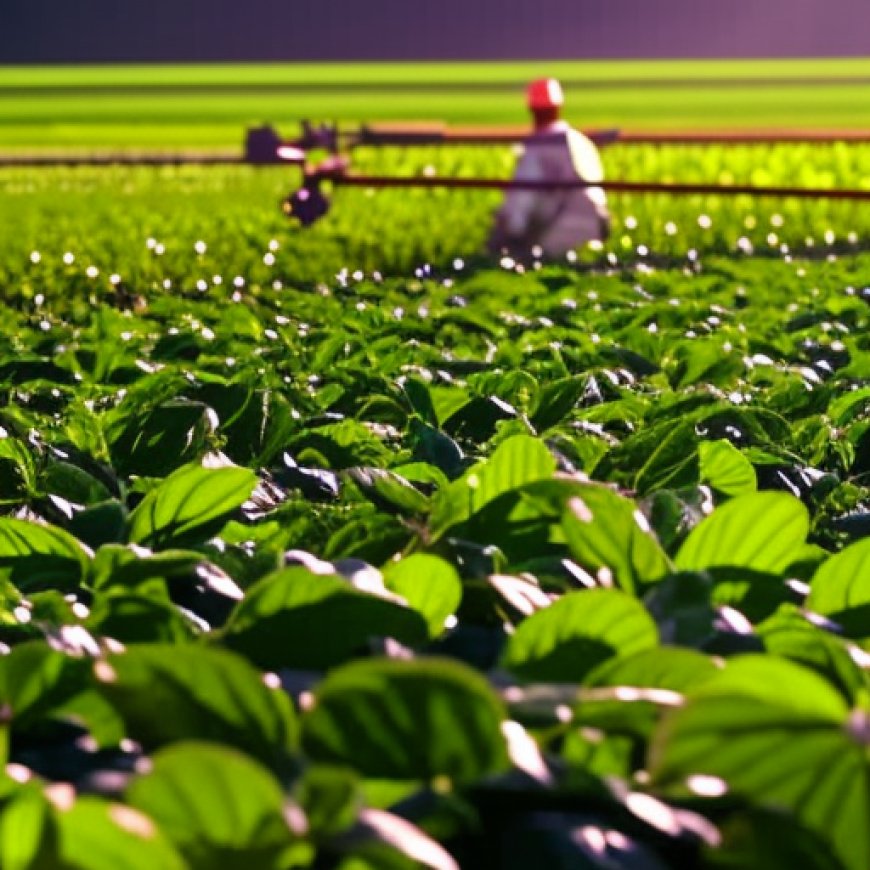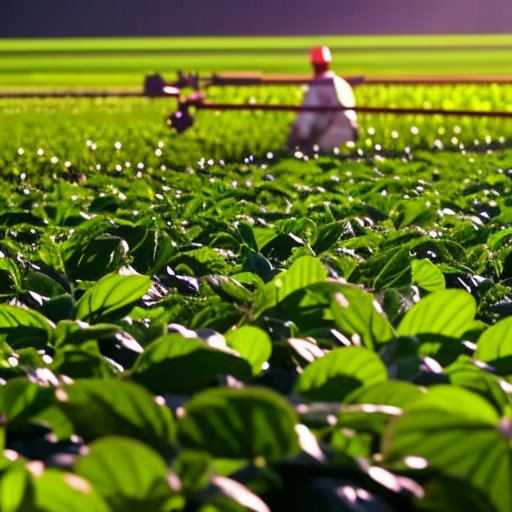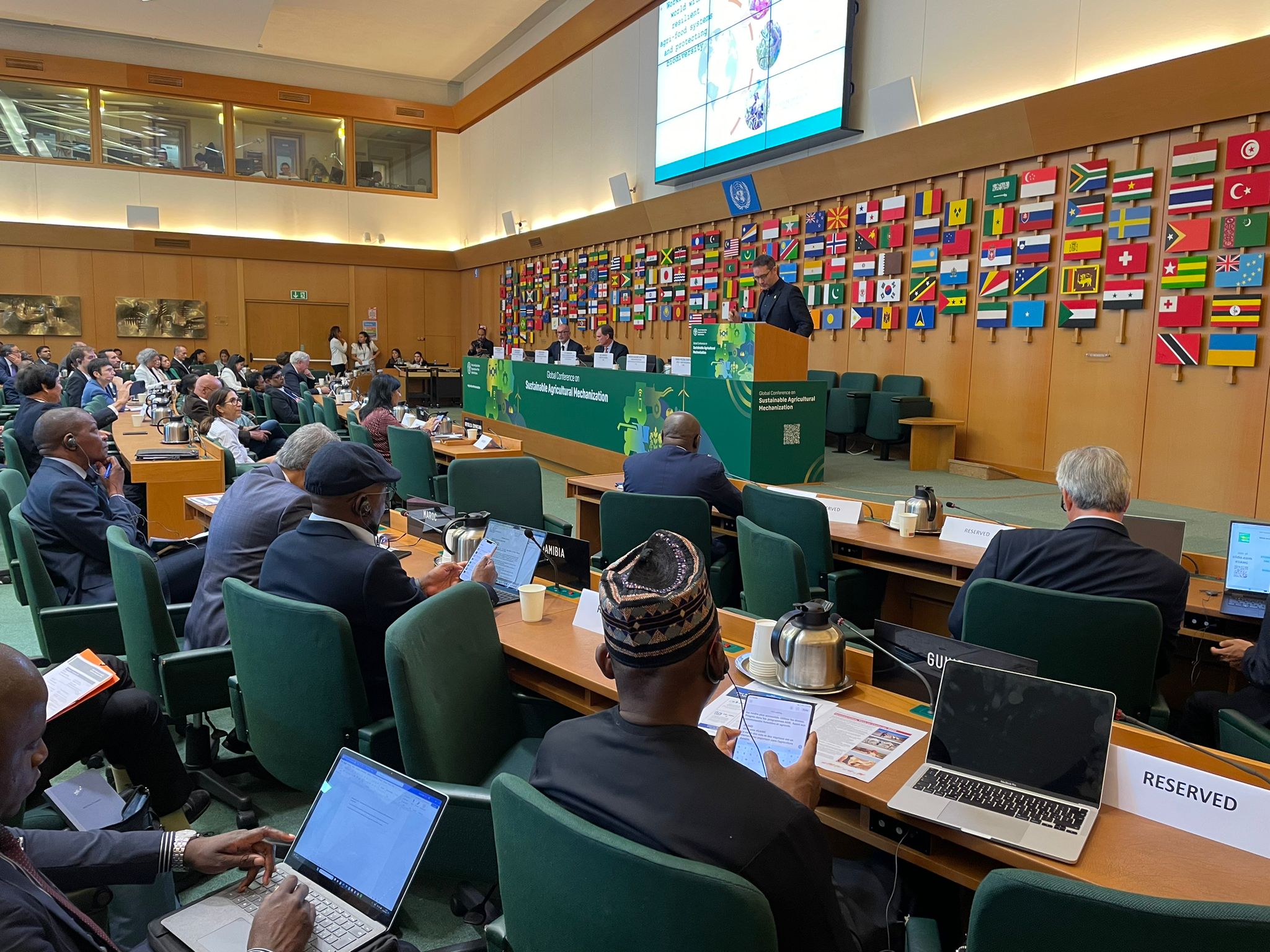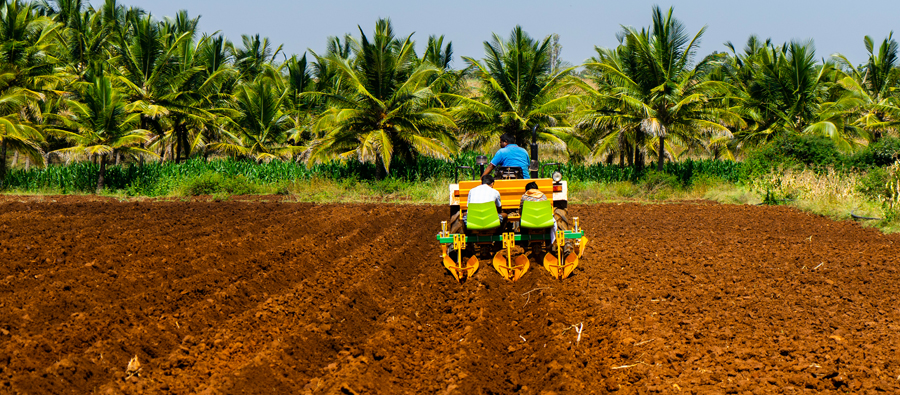Global Conference on Sustainable Agricultural Mechanization: Efficiency, Inclusiveness and Resilience
Global Conference on Sustainable Agricultural Mechanization ... CIMMYT


CIMMYT’s Participation in the Global Conference on Sustainable Agricultural Mechanization
CIMMYT participated in the inaugural Global Conference on Sustainable Agricultural Mechanization, organized by the Food and Agriculture Organization of the United Nations (FAO) from September 27-29, 2023. The gathering provided space for focused dialogues to prioritize actions and strengthen technical networks for sustainable development of agricultural mechanization.
Keynote Address by Bram Govaerts
Bram Govaerts, CIMMYT director general, presented a keynote address on September 27 regarding climate change and mechanization. As a global thought leader and change agent for climate resilient, sustainable and inclusive agricultural development, CIMMYT has many specific initiatives centered on mechanization for facilitating machine innovations and scaling-up improved farming practices for sustainability and farmer competitiveness.

Collaboration in Mechanization Efforts
Collaboration is a hallmark of CIMMYT’s endeavors in mechanization, including a strong partnership with local governments across Latin America, Africa and Asia, and international cooperation agencies, supporting the Green Innovations Centers installed by GIZ-BMZ and working on accelerated delivery models together with USAID, in Malawi, Zimbabwe and Bangladesh, to name only a few. Further, local value chain actor engagement is crucial and necessary in this work to connect farmers with viable solutions.
Projects and Initiatives
CIMMYT has a long history of leading projects aimed at mechanizing the agricultural efforts of smallholder farmers, including the successful MasAgro Productor in Mexico and FACASI (farm mechanization and conservation agriculture for sustainable intensification) in East and South Africa. At present, the Harnessing Appropriate-Scale Farm Mechanization in Zimbabwe (HAFIZ) project is working towards improving access to mechanization and reducing labor drudgery while stimulating the adoption of climate-smart/sustainable intensification technologies. The project engages deeply with the private sector in Zimbabwe and South Africa to ensure long-term efficacy.
The Scaling Out Small Mechanization in the Ethiopian Highlands project was active from 2017 to 2022 and increased access for smallholder farmers to planting and harvesting machines. Farmers using two-wheel tractors furnished by the project reduced the time needed to establish a wheat crop from 100 hours per hectare to fewer than 10 hours. CIMMYT’s work was in partnership with the Africa-RISING program led by the International Livestock Research Institute (ILRI) in Ethiopia.
“At CIMMYT, we work knowing that mechanization is a system, not only a technology,” said Govaerts. “Sustainable mechanization efforts require infrastructure like delivery networks, spare parts and capacity development. Working with local partners is the best way to ensure that any mechanization effort reaches the right people with the right support.”
Related Stories
One-minute science: Mechanization for agriculture
Mechanization is a process of introducing technology or farm equipment to increase field efficiency. CIMMYT’s mechanization work is context specific, to help farmers have access to the appropriate tools that are new, smart and ideal for their unique farming conditions.
[embedded content]
New generation of farmers adopts mechanization, making farming more productive and profitable
Working with the Cereal Systems Initiative for South Asia (CSISA), CIMMYT is leading mechanization efforts in Northern India. Combined with sustainable agriculture, the next generation of farmers now have access to tractors, seeders and other tools that are increasing yield and reducing back-breaking labor.

A promising partnership
The delivery of row seeders from India to Benin demonstrates a new path to sustainable South-South business relationships. Developed in India in an iterative design process with farmers, portable row seeders have been a great success. Working with GIC, CIMMYT facilitated a technology and materiel transfer of the portable row seeders to Benin.

Solar powered dryers boost peanut production in Togo
Peanuts thrive as a crop in Togo and other West Africa countries, but post-harvest is threatened by aflatoxins, so the entire crop needs to dry. Traditionally, farmers, often women, have dried the peanuts in the open air, subject to weather and other pests
SDGs, Targets, and Indicators
SDGs Addressed or Connected to the Issues Highlighted in the Article:
- SDG 2: Zero Hunger
- SDG 8: Decent Work and Economic Growth
- SDG 9: Industry, Innovation, and Infrastructure
- SDG 13: Climate Action
- SDG 17: Partnerships for the Goals
Specific Targets under the SDGs:
- SDG 2.3: By 2030, double the agricultural productivity and incomes of small-scale food producers, in particular women, indigenous peoples, family farmers, pastoralists, and fishers, including through secure and equal access to land, other productive resources and inputs, knowledge, financial services, markets, and opportunities for value addition and non-farm employment.
- SDG 8.2: Achieve higher levels of economic productivity through diversification, technological upgrading, and innovation, including through a focus on high-value added and labor-intensive sectors.
- SDG 9.1: Develop quality, reliable, sustainable, and resilient infrastructure, including regional and transborder infrastructure, to support economic development and human well-being, with a focus on affordable and equitable access for all.
- SDG 13.1: Strengthen resilience and adaptive capacity to climate-related hazards and natural disasters in all countries.
- SDG 17.6: Enhance North-South, South-South, and triangular regional and international cooperation on and access to science, technology, and innovation and enhance knowledge sharing on mutually agreed terms, including through improved coordination among existing mechanisms, in particular at the United Nations level, and through a global technology facilitation mechanism.
Indicators Mentioned or Implied in the Article:
- Indicator 2.3.1: Volume of production per labor unit by classes of farming/pastoral/forestry enterprise size.
- Indicator 8.2.1: Annual growth rate of real GDP per employed person.
- Indicator 9.1.1: Proportion of the rural population who live within 2 km of an all-season road.
- Indicator 13.1.1: Number of deaths, missing persons, and directly affected persons attributed to disasters per 100,000 population.
- Indicator 17.6.1: Number of science and/or technology cooperation agreements and projects between countries.
Table: SDGs, Targets, and Indicators
| SDGs | Targets | Indicators |
|---|---|---|
| SDG 2: Zero Hunger | Target 2.3: By 2030, double the agricultural productivity and incomes of small-scale food producers | Indicator 2.3.1: Volume of production per labor unit by classes of farming/pastoral/forestry enterprise size |
| SDG 8: Decent Work and Economic Growth | Target 8.2: Achieve higher levels of economic productivity through diversification, technological upgrading, and innovation | Indicator 8.2.1: Annual growth rate of real GDP per employed person |
| SDG 9: Industry, Innovation, and Infrastructure | Target 9.1: Develop quality, reliable, sustainable, and resilient infrastructure | Indicator 9.1.1: Proportion of the rural population who live within 2 km of an all-season road |
| SDG 13: Climate Action | Target 13.1: Strengthen resilience and adaptive capacity to climate-related hazards and natural disasters | Indicator 13.1.1: Number of deaths, missing persons, and directly affected persons attributed to disasters per 100,000 population |
| SDG 17: Partnerships for the Goals | Target 17.6: Enhance North-South, South-South, and triangular regional and international cooperation on and access to science, technology, and innovation | Indicator 17.6.1: Number of science and/or technology cooperation agreements and projects between countries |
Based on the article, the issues highlighted are connected to multiple Sustainable Development Goals (SDGs). SDG 2 (Zero Hunger) is addressed through initiatives aimed at increasing agricultural productivity and incomes of small-scale food producers. SDG 8 (Decent Work and Economic Growth) is connected to efforts in economic productivity through diversification, technological upgrading, and innovation. SDG 9 (Industry, Innovation, and Infrastructure) is relevant to the development of sustainable and resilient infrastructure. SDG 13 (Climate Action) is addressed through activities focused on strengthening resilience and adaptive capacity to climate-related hazards. SDG 17 (Partnerships for the Goals) is emphasized through collaboration and cooperation with local governments, international agencies, and value chain actors.
Specific targets under these SDGs can be identified based on the article’s content. Target 2.3 aims to double the agricultural productivity and incomes of small-scale food producers, which is addressed through CIMMYT’s initiatives. Target 8.2 focuses on achieving higher levels of economic productivity through diversification, technological upgrading, and innovation, which is connected to CIMMYT’s efforts in mechanization for sustainable agricultural development. Target 9.1 aims to develop quality, reliable, sustainable, and resilient infrastructure, which is relevant to CIMMYT’s work in improving access to mechanization. Target 13.1 aims to strengthen resilience and adaptive capacity to climate-related hazards and natural disasters, which is addressed through CIMMYT’s climate-smart/sustainable intensification technologies. Target 17.6 aims to enhance cooperation on science, technology, and innovation, which is emphasized through CIMMYT’s partnerships and collaborations.
The article mentions or implies several indicators that can be used to measure progress towards the identified targets. Indicator 2.3.1 measures the volume of production per labor unit by classes of farming/pastoral/forestry enterprise size, which can assess the increase in agricultural productivity and incomes of small-scale food producers. Indicator 8.2.1 measures the annual growth rate of real GDP per employed person, which can indicate progress in economic productivity. Indicator
Behold! This splendid article springs forth from the wellspring of knowledge, shaped by a wondrous proprietary AI technology that delved into a vast ocean of data, illuminating the path towards the Sustainable Development Goals. Remember that all rights are reserved by SDG Investors LLC, empowering us to champion progress together.
Source: cimmyt.org

Join us, as fellow seekers of change, on a transformative journey at https://sdgtalks.ai/welcome, where you can become a member and actively contribute to shaping a brighter future.







